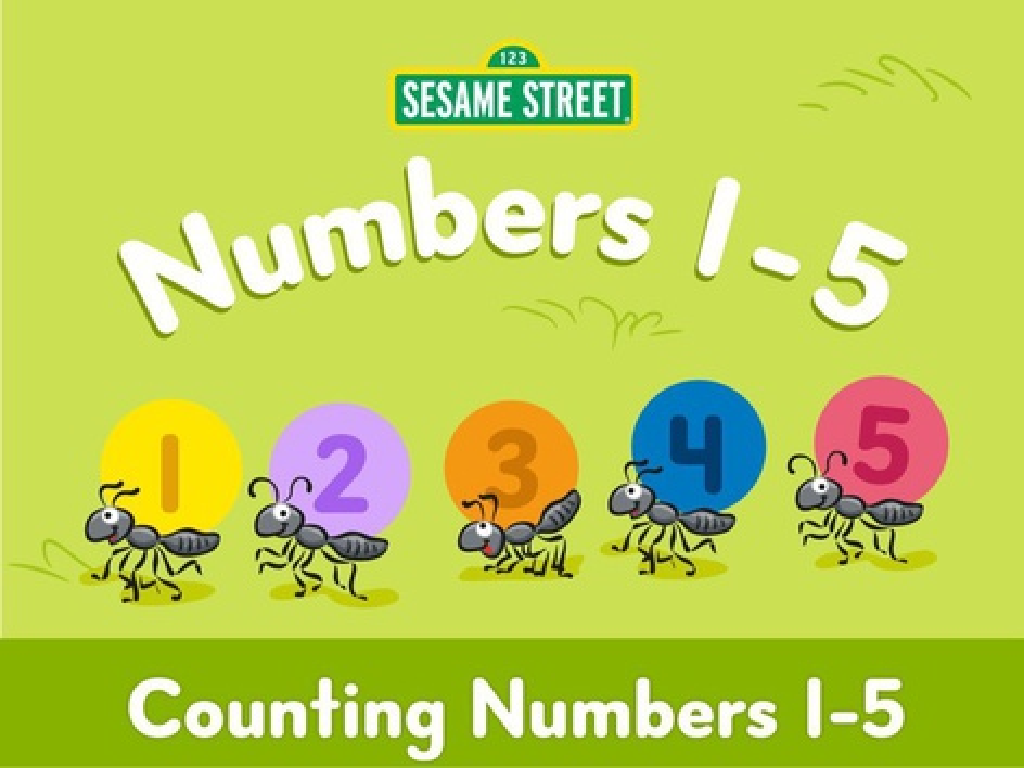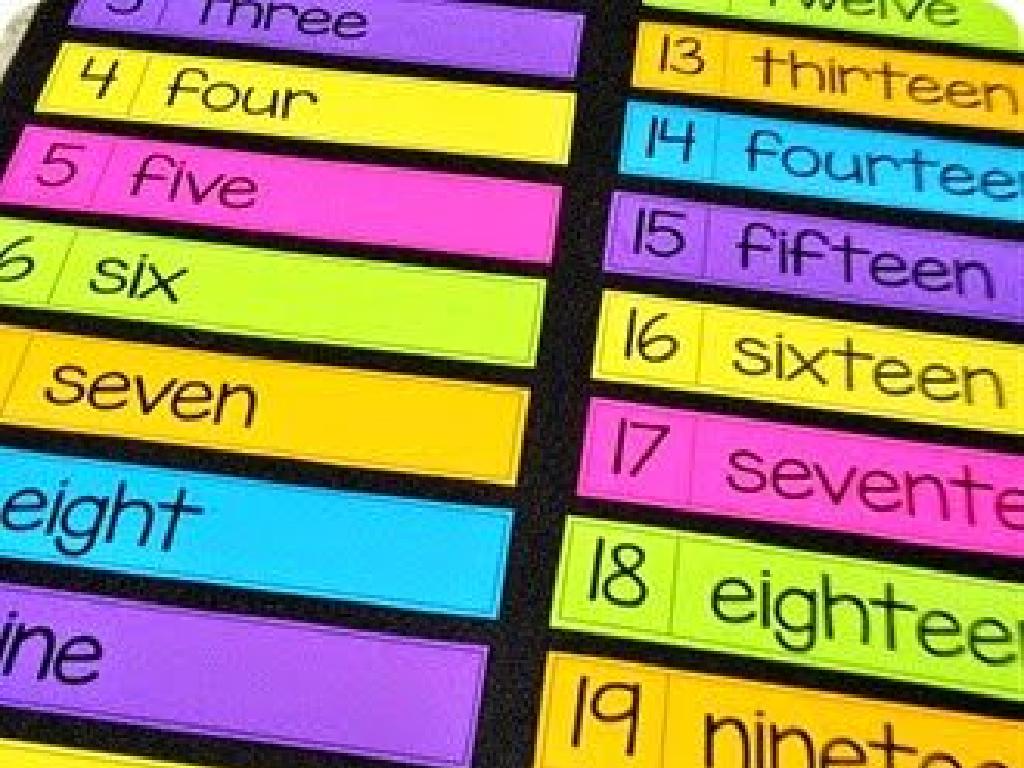Is The Subject Singular Or Plural?
Subject: Language arts
Grade: Fourth grade
Topic: Verb Types
Please LOG IN to download the presentation. Access is available to registered users only.
View More Content
Today’s Adventure: Singular or Plural Subjects?
– Verbs change with the subject
– ‘He runs’ vs. ‘They run’ – verb changes with subject number
– Singular vs. plural subjects
– Singular means one, plural means more than one
– Making sentences sound correct
– Without correct verbs, sentences sound strange!
– Importance of subject-verb agreement
– It’s key to communicate clearly and be understood
|
This slide introduces the concept of subject-verb agreement and its importance in constructing grammatically correct sentences. Emphasize to the students that verbs must match the subject in number; singular subjects take singular verbs, and plural subjects take plural verbs. Provide examples of both singular and plural subjects and how the verb changes. Explain that proper subject-verb agreement is essential for clear communication. Encourage students to listen for subject-verb agreement in everyday conversations and practice with sentences they create.
Understanding Subjects in Sentences
– What is a subject?
– The subject is the main focus of a sentence, like ‘dog’ in ‘The dog barks.’
– Singular vs. Plural Subjects
– Singular means one; plural means more than one. ‘Cat’ is singular; ‘cats’ is plural.
– Identifying subjects in sentences
– Let’s find the subject in ‘The children play.’
– Practice with examples
– We’ll look at sentences together and decide if the subjects are singular or plural.
|
This slide introduces the concept of subjects in sentences, distinguishing between singular and plural. Begin by explaining that the subject is the main focus of a sentence, usually a noun or pronoun. Emphasize the difference between singular and plural subjects, using clear examples. Engage the class by identifying subjects in example sentences together, reinforcing the concept. Provide practice opportunities with example sentences, asking students to identify the subject and determine if it is singular or plural. This interactive approach will help solidify their understanding of subjects in the context of verb types.
Singular vs. Plural Subjects
– Singular means one subject
– Plural means more than one
– Example: ‘The cat sleeps.’
– ‘Cat’ refers to one, so we use ‘sleeps’
– Example: ‘The cats sleep.’
– ‘Cats’ refers to many, so we use ‘sleep’
|
This slide introduces the concept of singular and plural subjects and their agreement with verbs. Singular subjects are when we talk about one person, place, thing, or idea. Plural subjects are used when we refer to more than one. It’s crucial for students to recognize the difference because it changes the form of the verb used in a sentence. For example, with a singular subject ‘cat,’ the verb is ‘sleeps,’ while for a plural subject ‘cats,’ the verb is ‘sleep.’ Encourage students to identify the subject in sentences and decide if it is singular or plural, then choose the correct verb form. Practice with more examples in class to reinforce the concept.
Matching Verbs to Subjects
– Verbs agree with subjects in number
– Singular subjects need singular verbs
– If ‘dog’ barks, we say ‘dog barks’ not ‘dogs bark’
– Plural subjects use plural verbs
– For ‘dogs’, we say ‘dogs bark’ not ‘dog barks’
– Practice with examples
– ‘The cat runs fast’ vs. ‘The cats run fast’
|
This slide is focused on teaching students the basic rule of subject-verb agreement. It’s crucial for students to understand that verbs must match the number of the subject; singular with singular and plural with plural. Use everyday examples to illustrate this point, such as a single dog barking versus multiple dogs barking. Encourage students to practice by creating sentences with both singular and plural subjects and matching them with the correct form of the verb. This will help solidify their understanding of subject-verb agreement in a practical and engaging way.
Let’s Practice Together: Singular or Plural?
– Identify if the subject is singular or plural
– Is ‘dog’ in ‘The dog barks’ singular or plural?
– Correct verbs to match the subject
– Let’s make ‘The cat chase the mouse’ correct together
|
This interactive slide is designed for a class activity where students will practice identifying whether the subject in given sentences is singular or plural. Display sentences on the board one by one and ask students to determine the number of the subject. Once they respond, guide them through the process of ensuring the verb agrees with the subject in number. For example, if the sentence is ‘The cat chase the mouse,’ ask students to find the error and correct it to ‘The cat chases the mouse.’ This exercise will reinforce the concept of subject-verb agreement and improve their grammatical skills. Prepare a list of sentences with both singular and plural subjects and varying verb forms for the activity. Encourage participation and provide positive feedback to build confidence.
Singular vs. Plural Subjects
– Singular subjects match singular verbs
– Like ‘The dog barks’ because it’s one dog
– Plural subjects match plural verbs
– Like ‘The dogs bark’ because it’s more than one dog
– Watch out for irregular verbs
– Some verbs don’t follow the pattern
– Remember the exceptions to the rules
– Words like ‘everyone’ are singular, not plural!
|
This slide is crucial for understanding subject-verb agreement. Emphasize that verbs must agree in number with their subjects: singular subjects take singular verbs, and plural subjects take plural verbs. Use examples to illustrate regular and irregular forms. Highlight common exceptions, such as collective nouns and indefinite pronouns, which can be tricky. Encourage students to practice by identifying subjects and verbs in sentences and checking for agreement. Provide additional examples and exercises for students to apply these rules.
Class Activity: Verb Hunt!
– Read a story as a class
– Highlight all the verbs found
– Determine if subjects are singular or plural
– Is ‘dog’ singular or plural? What about ‘dogs’?
– Check verb-subject agreement
– Does ‘dog barks’ sound right or should it be ‘dog bark’?
|
This interactive class activity is designed to help students identify verbs in a text and understand subject-verb agreement. Start by reading a story aloud with the class. Then, have students individually or in groups highlight all the verbs they find. Next, ask them to determine whether the subject of each verb is singular or plural and whether the verb agrees with the subject. For example, ‘The dog barks’ shows a singular subject with a singular verb, while ‘The dogs bark’ shows a plural subject with a plural verb. After the activity, review the answers together, discussing why each verb is correct or incorrect. This will reinforce their understanding of subject-verb agreement in a practical context. Possible activities: 1) Pair students to find verbs, 2) Have a contest to see who can identify the most verbs, 3) Create a worksheet with sentences for students to practice, 4) Use different colored highlighters for singular and plural, 5) Discuss as a class and correct sentences on the board.
Wrapping Up: Subject-Verb Agreement
– Congrats on learning subject-verb agreement!
– Practice is key to mastery
– Homework: Write 10 sentences
– 5 sentences with singular subjects and verbs, 5 with plural
– Check subjects and verbs match
– Ensure singular subjects have singular verbs, and plural subjects have plural verbs
|
Great work today, class! Understanding how subjects and verbs must agree in number is a fundamental skill in grammar. Remember, consistent practice is essential to becoming proficient. For homework, students are tasked with writing sentences to reinforce their learning. They should create 5 sentences with singular subjects and matching singular verbs, and another 5 with plural subjects and verbs. This exercise will help solidify their understanding of subject-verb agreement. In the next class, we can review some of these sentences together to celebrate successes and clarify any confusion.






